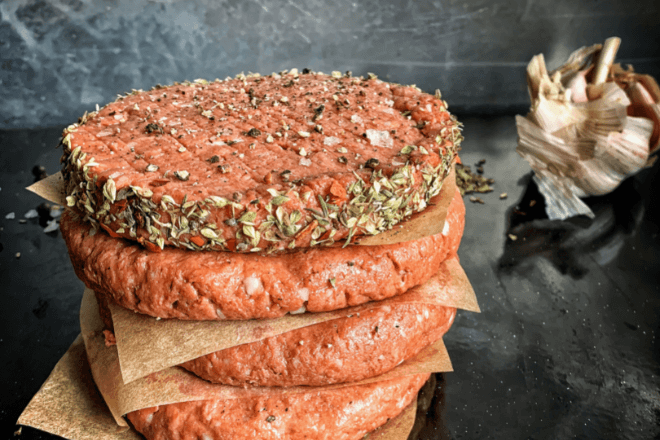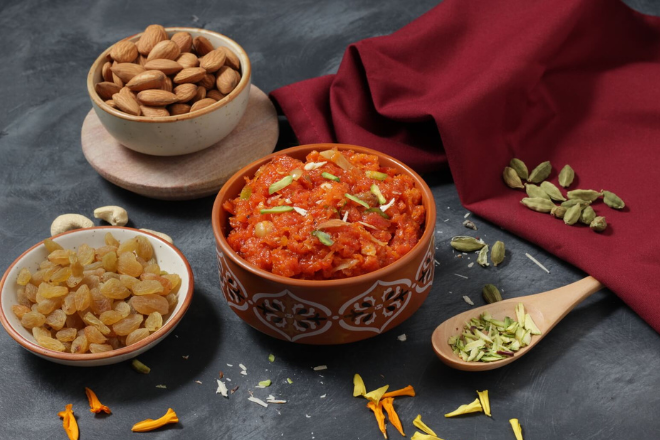Fast forward to today – ask for vegetarian chicken, and you’ll be met with a long list of vegetarian meat and chicken alternatives. Plant based-chicken nuggets, sausages, kheema, mutton burger patties and even plant-based seafood and eggs… the choice is yours and growing. These edibles are part of a burgeoning food paradigm that provides the flexitarian, vegan and vegetarian foodie with alternatives to animal foods. Preferences driven by the “health-conscious” or the “environmentally-conscious” consumer are leading to a bevy of start-ups inventing products that not only taste and smell, but even cook and sizzle like meat.
So are these meat alternatives for you?
Before we get into all the nutrition mumbo jumbo, let’s first look at mock meat and how it is made.
Mock meats were always part of world cuisine and often saw the home-based cook or a chef replace meat with plant-based options with the mouth-feel of meat. You had raw jackfruit masquerading as shredded chicken and ground-up beans or a slab of tempeh moonlighting as mutton. But now, with the processing industry at its peak (and still climbing), these and other plant foods such as soybean, chickpeas, pea protein and mung bean are being processed into meat alternatives. Would you believe it if I said that even the air around you is being converted into meat? Yes, you heard it right. Elements of air are fermented with microbes to produce a protein powder that can be made into any kind of meat or seafood. True to its origin, it is being called airprotein and might hit your plates sometime next year after regulatory approval.
In the meantime, you have to make do with plant-based meat alternatives that have been created using more down-to-earth ingredients. Yellow and green peas flours, dals, chickpeas, fava beans, soy protein concentrate and proteins from potato, carrots, coconut, ancient grains, oil seeds and corn form the fundamental building block of meat alternatives that are on grocery shelves right now. Novel proteins extracted from exotic ingredients such as seaweed, algae, lenteins (also called water lentils), hemp, and fungus (mycoprotein) are also game. Pun intended 🙂
However, beyond these base ingredients, it’s in the processing techniques where the magic lies. New-age advances such as shear cell processing and extrusion technology subject these plant proteins to high thermal and mechanical stresses that alter and transform the protein texture. The humble soy protein or rajma or whichever protein has been used gets a makeover and now resembles and feels like animal protein.
So to go beyond and give consumers a sensory experience that is as close as to the original, manufacturers also add other ingredients such as hydrocolloids, minerals, vitamins, coconut and sunflower oil, flavourings and colours such as beet juice to the product. One of the top products that “bleeds” and is a best seller in the West is coloured with soy leghemoglobin, a heme-containing protein from the roots of the soy plant. So with the boxes ticked for taste, look, mouth feel and smell, what about nutrition and how healthy are these?
And the question… should you bite it?
Well, it largely depends on your motivation. Suppose you are passionate about the environment and bothered about climate change and greenhouse emissions accompanying fishing or cattle-rearing, then mock meat is your BFF.
But, suppose your main intention is eating healthier. In that case, it depends on the product you choose, what you are looking for in terms of health benefits and what you compare it with.
When you compare it to its meat compatriot, a plant-based alternative would be lower in energy density, total fat, saturated fat and higher in fibre. So if you are trying to eat healthy and/or lose weight, this may be an option, provided you don’t slather on high-fat dressings and other fat heavy fixings on your finished dish.
However, it is also important to point out that meat alternatives may not always provide you with the same amount of protein as real meat. Manufacturers sometimes try to match the original’s nutritional profile by using a blend of proteins and providing a meat alternative that is high in protein, low in carbs and even rich in omega fats. But a recent study indicated that even if the plant-based meat alternative is high in protein, the body might not be able to absorb the protein as much as it would from its meat counterpart. In this study, the authors looked at meat alternatives made up of soya/wheat protein. Having said that, evaluating all the different types of proteins used for absorption efficiency is essential and a conclusion can’t be drawn from just one kind of protein. So the jury is still out on this one.
When comparing a meat alternative to on-pack or nutritional regulations, some of the products might not tick the heart-healthy box, especially when it comes to the sodium content. Researchers in the UK found that nearly 14% of plant-based meats were classified as “less healthy” (due to high amounts of total and saturated fats) when evaluated based on the Nutrient Profiling Model. They also found that about three-quarters of plant-based meats did not meet UK salt targets. So if it is for the heart that you are switching, then mind the sodium and saturated fat and read the label.
It is also important to say that mock meat is (super) ultra-processed, contains a lot of additives, far removed from their original form, and might not necessarily fit an individual’s idea of clean eating.
To sum it up, it is important to remember that not all meat alternatives are created equally. Some manufacturers are just looking to give the “environmentally-conscious” a meat alternative, and these products may be high in total fat, calories and sodium. Others cater to the “health-conscious” and give a product that matches its animal counterpart’s texture, taste and nutrient profile. The health quotient of meat alternatives, therefore, depends on what the product is made up of and how you finish off the dish in your kitchen.
So introspect to be clear why you’re picking mock meat over the real deal, be a label reader who chooses wisely, and cook smart! Bon appetit.
When you support Cuddles, you take life-saving nutrition to children fighting cancer.
Donate nowWritten by:
Dr. Sripriya Venkiteswaran (Ph D. Nutritional Sciences)
Content Consultant: CICN
1. How Plant-Based Meat and Seafood Are Processed. Last accessed 29th June 2022.
2. Alessandrini R, Brown MK, Pombo-Rodrigues S, Bhageerutty S, He FJ, MacGregor GA. Nutritional Quality of Plant-Based Meat Products Available in the UK: A Cross-Sectional Survey. Nutrients. 2021 Nov 25;13(12):4225.
3. Chen D, Rocha-Mendoza D, Shan S, Smith Z, García-Cano I, Prost J, Jimenez-Flores R, Campanella O. Characterization and Cellular Uptake of Peptides Derived from In Vitro Digestion of Meat Analogues Produced by a Sustainable Extrusion Process. J Agric Food Chem. 2022 Jun 22





